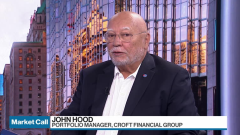Jun 19, 2024
First Norway Rate Cut Is Likely Half a Year Away: Decision Guide
, Bloomberg News

(Bloomberg) -- Norges Bank is probably about to signal that it’s nowhere near ready to cut borrowing costs in an economy that shows signs of largely withstanding tightened monetary policy.
With Norwegian officials widely anticipated to keep their key deposit rate at 4.5%, the highest level since 2008, investors will focus on just how far back Governor Ida Wolden Bache and other policymakers plan to dial back their first move when they publish their decision on Thursday.
Officials are confronting evidence that inflation and wage pressures aren’t receding as much as elsewhere, raising the prospect that Norges Bank will vie with peers including the US Federal Reserve to be the last developed-world central bank standing yet to start an easing cycle.
Elsewhere in the region, counterparts in neighboring Sweden, the euro zone, and Switzerland have already begun rate cuts, while the UK might do so as soon as August.
By contrast, SEB AB’s currency strategist Amanda Sundstrom reckons Norwegian officials will adjust their outlook to show December as the most likely timing for a move, from September seen previously.
“Economic activity and expectations of growth have been surprising on the upside, and wage growth is most likely set to be higher than Norges Bank had predicted,” she said.
Norway’s fossil-fuel rich economy has enjoyed windfall export gains following sanctions on Russia. In the latest evidence of its improving outlook, a survey of central bank business contacts published last week showed that companies — aside from those in construction — expect output to increase both this quarter and next, as well as for wage pressures to rise.
Salary growth is seen keeping last year’s pace of 5.2% in 2024, up from the central bank’s March estimate of 4.9%, the survey showed.
Such brightening economic prospects were also among the reasons for a warning from Wolden Bache and other colleagues last month that the first cut may be postponed beyond September.
The case to avoid delay includes core inflation largely in line with central bank’s projections, and labor-market developments broadly matching its scenario. Meanwhile the krone has strengthened from recent lows — even though it remains the third-worst performer this year among the world’s 10 most-traded currencies.
Traders in overnight swaps now price in 6 basis points worth of a key rate cut at the September meeting, compared with 11 basis points seen after the May meeting. They see 10 basis points of cuts by November.
A majority of analysts surveyed by Bloomberg a month ago saw Norges Bank starting easing during the third quarter. Some have turned more cautious, with economists at Svenska Handelsbanken AB joining counterparts at the largest Nordic lender, Nordea Bank Abp, in predicting no move until the first quarter of 2025.
“Norges Bank cannot be certain enough that inflation comes down to 2%” over its forecast horizon, said Sara Midtgaard, a senior economist with Handelsbanken. “There is a point to wait until the Fed is done with their first interest-rate cut, and therefore Norges Bank’s cut has to be postponed until next year.”
--With assistance from Joel Rinneby, Harumi Ichikura and Gina Turner.
©2024 Bloomberg L.P.






